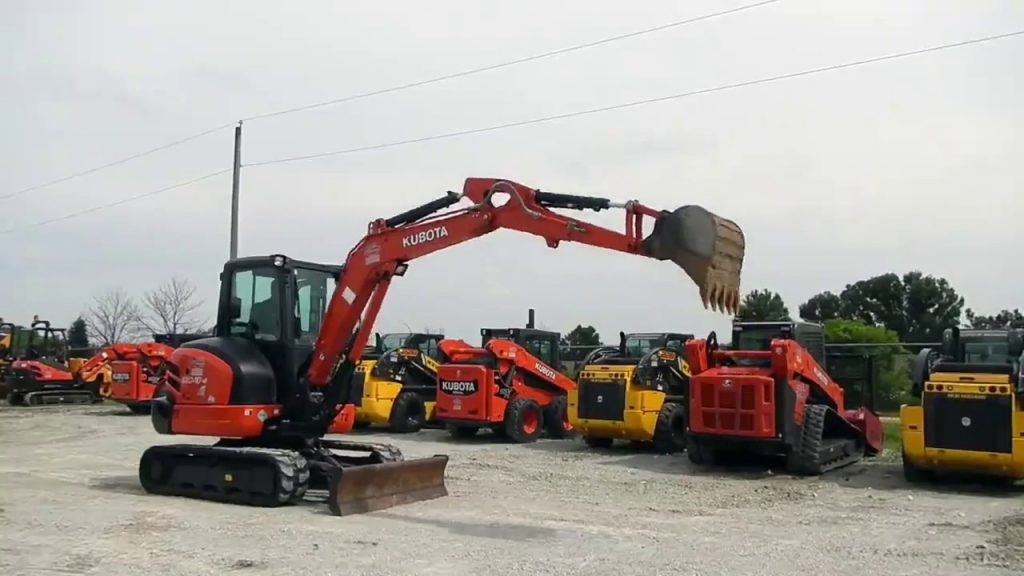Hi everyone, I ran into a problem today when I bought a secondhand Kubota KX-040 excavator. When checking the engine number it read “VIN” instead of “SN”. The seller didn’t know the difference and neither did the mechanic who was there with his equipment to check it. Would anyone mind pointing me to some resources or tutorials that explain how to tell the year and model of a Kubota excavator based on vin?
kubota excavator year serial number chart
The serial number is usually located on a plate under the hood or on the frame. You can also find it in the operator’s manual.
In order to do its job, a Kubota engine needs clean fuel. The easiest way to keep it clean is to use a filter before the fuel reaches the carburetor. If you have a tractor that is not fuel injected — an older model, most likely — then you have a carburetor.
These things need regular cleaning and proper maintenance in order to run smoothly. If they are neglected, they will eventually fail or become gummed up and require replacement.

Model number starts with:
1 = Excavators
2 = Wheel Loaders
3 = Compact Tractors
4 = Track Loaders
5 = Skid Steer Loaders
KX71-3S (7,001 – 8,000 lbs)
KX91-3S (8,001 – 9,000 lbs)
U25-3 (7,201 – 8,000 lbs)
U45-4 (9,001 – 10,000 lbs) KX121-3S (10,001 – 11,000 lbs) U35-4 (8,001 – 9,000 lbs)
KX033-4 (5,721 – 6.000 lbs)
The first letter indicates the type of equipment – K is the letter for construction machines
What do all those letters and numbers mean? The first letter indicates the type of equipment – K is the letter for construction machines. The second letter is usually a B, C or E. B stands for a wheeled machine, C stands for a crawler and E stands for an aircraft. The third letter is almost always G, but sometimes it is R or S. G stands for “general purpose” (i.e., not specialized). The R stands for “rugged” and the S for “super”.
The next three digits are the series number. For example, a PC200LC-8 is in the PC200-series and this one is in model number 8 of that series. Large excavators are often followed by two letters that indicate what job they were built to do. These letters might be CL, which means “compact line”. Other possible endings include HD (heavy duty), LC (long carriage), LL (long life), SE (special edition) or UHD (ultra heavy duty).
The final few numbers designate the configuration of the machine. This might be something like K007005, which would mean that it’s a standard machine with no special attachments or modifications.
The second letter indicates the weight class – X stands for mid-size excavators of 7 to 10 metric tons (15,400 to 22,040 pounds)
If you’re in the construction industry and shopping for a new excavator, you may have come across the Caterpillar brand, which is the most popular type of excavator. This company builds reliable heavy equipment and has become a model for other companies to follow.
The second letter indicates the weight class – X stands for mid-size excavators of 7 to 10 metric tons (15,400 to 22,040 pounds)
The third letter indicates the engine type
S – Standard (mechanical)
Z – Zero tail swing
P – Power boost
The fourth letter indicates the excavator series
R – R Series (discontinued)
E – E Series (discontinued)
K – K Series
C – C Series
The fifth letter indicates the subseries:
X for standard machines and L for long reach machines.
The next two numbers identify the series – 04 is a compact excavator
The next two numbers identify the series – 04 is a compact kubota excavator. The next two numbers represent the year and month of manufacture. For example, 1102 means February 2001. The remaining three numbers are a serial number that starts at 001.
The first letter in the Kubota model number represents the series or type of equipment. For example, R represents a lawnmower, B an agricultural tractor, L a skid-steer loader and K for a Kubota excavator.
The next two numbers identify the series – 04 is a compact kubota excavator; 05 is a utility vehicle; 09 is a commercial front mower; 11 is a mid-duty or heavy-duty engine; and 60 is an engine family tractor.
The next two numbers represent the year and month of manufacture. For example, 1102 means February 2001. The remaining three numbers are a serial number that starts at 001.
The next two numbers indicate kubota engine output in horsepower – “0” is a 10 horsepower diesel engine
The next two numbers indicate kubota engine output in horsepower – “0” is a 10 horsepower diesel engine, “1” is 12 horsepower and “2” is 14 horsepower. The number following the letters are the number of cylinders – “2” is two cylinder diesel engines, “3” is three cylinder engines and “4” is four cylinder engines. The last three numbers are the unit’s serial number.
The Kubota Corporation manufactures farm, industrial and small tractor equipment. According to Kubota’s serial number identification guide, the first two characters indicate the type of equipment that has been manufactured. In this case, “LB” indicates a small tractor that weighs between 1,400 lbs. and 1,499 lbs., or about 40 to 48 horsepower tractors.
The next two numbers indicate kubota engine output in horsepower – “0” is a 10 horsepower diesel engine, “1” is 12 horsepower and “2” is 14 horsepower. The number following the letters are the number of cylinders – “2” is two cylinder diesel engines, “3” is three cylinder engines and “4” is four cylinder engines. The last three numbers are the unit’s serial number.
The Kubota next three letters are assigned randomly but uniquely to each model and each series
The Kubota next three letters are assigned randomly but uniquely to each model and each series. This makes the serial number of a particular machine unique. So, when you see a serial number such as “L3540HSTC-1UJ”, you can determine that it is a 2015 L3540 tractor and it is the 48th piece of equipment made in that model year. The first letter denotes the month, so “A” would be January, “B” would be February and so on.
